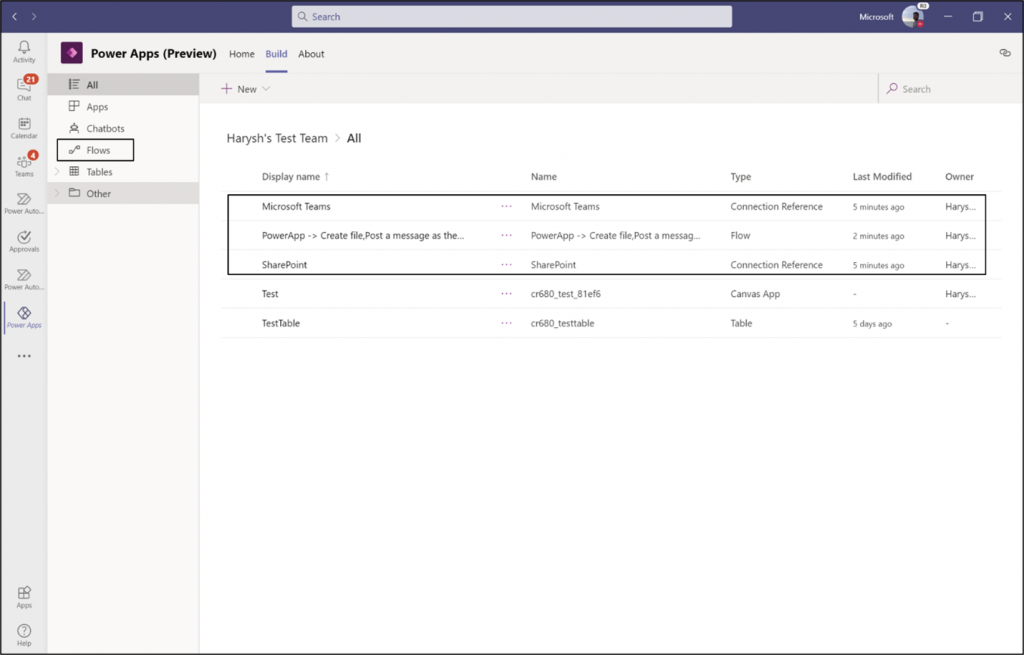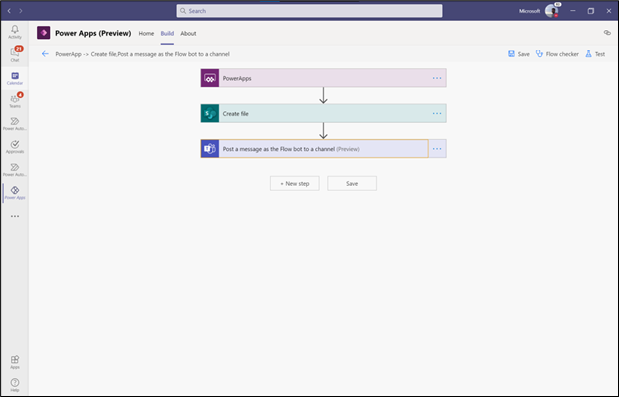Automation made easy with Dataverse for Microsoft Teams and Microsoft Power Automate
Microsoft has always strived to offer the best low-code automation capabilities available on the market. At this year’s spring Ignite conference we demonstrated our commitment to ensuring developers have even greater access to robotic process automation by offering Power Automate’s Desktop Flows with devices running on Windows 10. At Microsoft Build, we demonstrated how the easy access to Power Automate Desktop Flows also empowers experienced developers and announced the general availability of Process Advisor. With its low-code functionality and extension into Azure, Power Automate empowers developers of all skill levels, from citizen to professional developers, to easily collaborate and create business solutions that can combine the technical skills of pro developers with the exact business requirements gained from the frontline knowledge of citizen developers. For those who have followed the evolution of Power Automate, you are aware of the rapid growth and release of features which further enhance Power Automate capabilities. Another exciting feature we launched a few months ago, is the seamless integration of Power Automate to apps created using Microsoft Dataverse for Teams which recently became generally available. With Dataverse for Teams, users can create fully functional apps or chatbots using Microsoft Power Apps or Microsoft Power Virtual Agents canvas tools right from Teams. With the deeper focus on mobile work, Teams has grown into the hub of collaboration for many organizations. With the launch of Dataverse for Teams, collaboration is seamlessly integrated with creation. Let’s look at how Dataverse for Teams and Power Automate plays a significant role in enhancing the work experience.
Dataverse for Teams
Dataverse for Teams is an important subset of Microsoft Dataverse. With Dataverse, users can:
• Deliver services with agility by using an extensible data platform that uses out-of-the-box common tables, extended attributes, semantic meanings, and an open ecosystem.
• Increase scale and efficiency by quickly developing applications, processes, and reusable data schemes. Also, easily build, validate, and deploy your applications using GitHub and Azure DevOps.
• Make your data work smarter by adding low-code AI tools to your process automation. Identify and resolve duplicated and conflicting data with a managed data platform that includes built-in business logic and rules.
• Rely on the security of a trusted platform with a robust security management infrastructure that provides critical security and compliance capabilities—advanced encryption, rich access control, and deep integration with Azure Active Directory.
As Figure 1 depicts, Microsoft Teams integrations offer development capabilities which range from full-code custom solutions to ready-made apps. The new Dataverse for Teams provides a balance for pro developers and citizen developers to create unique solutions to address business challenges.

Figure 1. Dataverse for Teams with Power Platform offers a balance for pro developers and citizen developers to create powerful business solutions
Dataverse for Teams offers a suite of embedded Microsoft Power Platform tools in Teams, including Power Automate. With Dataverse for Teams, organizations can easily build low-code apps, automate processes, and deploy chatbots without leaving Teams. All of this creative capability comes with rich administration, security, and governance. Microsoft Dataverse for Teams follows the existing governance rules established by Power Platform and offers access control through the Teams Admin Center. Check out more more details about the Teams Admin Center. Also learn more about Power Platform admin center which provides more detail on Power Platform solutions and control, including monitoring dedicated capacity utilization. Since Dataverse for Teams entered preview in September, many organizations have been using Power Platform in Teams, driven by the ease of use of Dataverse for Teams as a low-code back end. Let’s look at how Power Automate can be used in Dataverse for Teams.
Easily add automations to Dataverse for Teams App
With Power Automate’s integration to Dataverse for Teams, users can easily add automation to apps built with Dataverse for Teams. Figure 2 shows the ‘solution explorer’ view in the Teams UI and the list of flows created using Dataverse for Teams for one team. With Dataverse for Teams, the apps, bots, and flows are created by team members of a given team. While a team owns the apps, bots, and flows, they can be shared organization-wide if desired.

Figure 2. List of flows in the solution explorer view shows flows created for a specific team in Teams using Dataverse for Teams
Power Automate’s UI makes it very easy to create a step-by-step view of the automation a user creates. That same easy to follow UI is available in Dataverse for Teams. It is seamlessly embedded into Teams so users can create their automation right from Teams as shown in figure 3. With Power Automate in Dataverse for Teams, users have the same rich experience offered by the native Power Automate service. The seamless integration across the multiple connectors and ease of use in Teams, makes it easy to create powerful automations for apps right inside the Teams experience. With Dataverse for Teams, automation for apps and bots is an easy, seamless process, and enabled within the collaborative environment of Teams. It is a powerful example of the benefits of integration and combining collaboration and creativity.

Figure 3. Power Automate flow created in Teams using Dataverse for Teams
Enhance Your Digital Transformation with Power Automate
Learn more about Power Automate by joining our growing Power Automate community and participate in discussions, provide insights, and even influence product roadmap. If you’re not already, begin following the Power Automate blog to get news on the latest updates. To get started on your first flows, learn how to use Power Automate from our tutorials and our video channels hosted by Power Automate engineers who will demonstrate how to create sophisticated flows within a matter of minutes. Go to powerautomate.com, to get started with Power Automate today!
